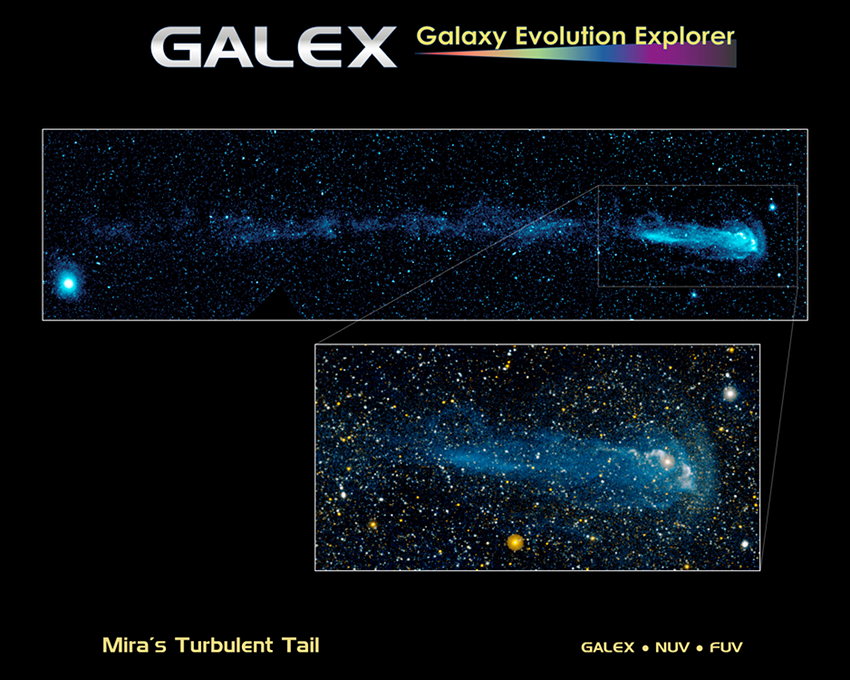
 Credit: NASA/JPL-Caltech/C. Martin (Caltech)/M. Seibert(OCIW)
Credit: NASA/JPL-Caltech/C. Martin (Caltech)/M. Seibert(OCIW)
Star of Wander
The fixed stars move, some quite rapidly. In our Galaxy, many of the stars move together, orbiting around the center of the Milky Way in (more or less) unison. But some stars are more independent than others, and take the road less traveled by. The star Mira ("Wonderful", so named by the Polish astronomer Johannes Hevelius in 1662) is one of the more independent, a pulsating red giant binary with a white dwarf companion. Mass flows from the red giant to the white dwarf, and this entire systems hurtles through the Milky Way at nearly 300,000 milkes per hour, relative to its surrounding material. This high relative speed produces a strong "bow shock" like a speedboat moving on a lake, and also a surprisingly long, narrow tail which stretches more than 13 lightyears, about three times the distance between the sun and its next nearest stellar neighbor. This tail, shown above, glows in ultraviolet light and was discovered by the the Galaxy Evolution Explorer (GALEX) during part of its UV survey of the entire sky.
Published: December 20, 2021
<
HEA Dictionary ● Archive
● Search HEAPOW
● Other Languages
● HEAPOW on Facebook
● Download all Images
● Education ● HEAD
>

Each week the HEASARC
brings you new, exciting and beautiful images from X-ray and Gamma ray
astronomy. Check back each week and be sure to check out the HEAPOW archive!
Last modified Tuesday, 27-Feb-2024 10:10:11 EST


